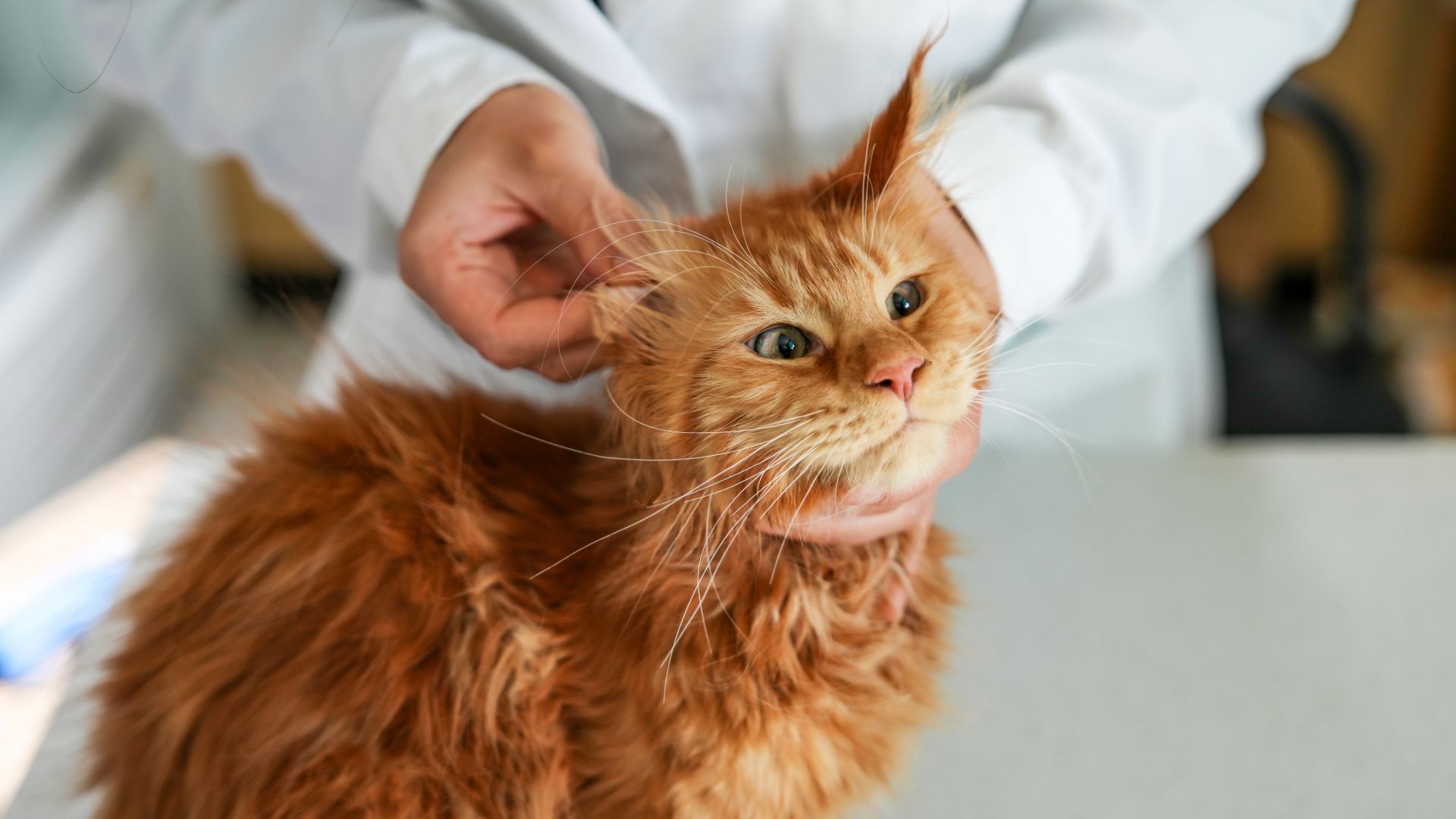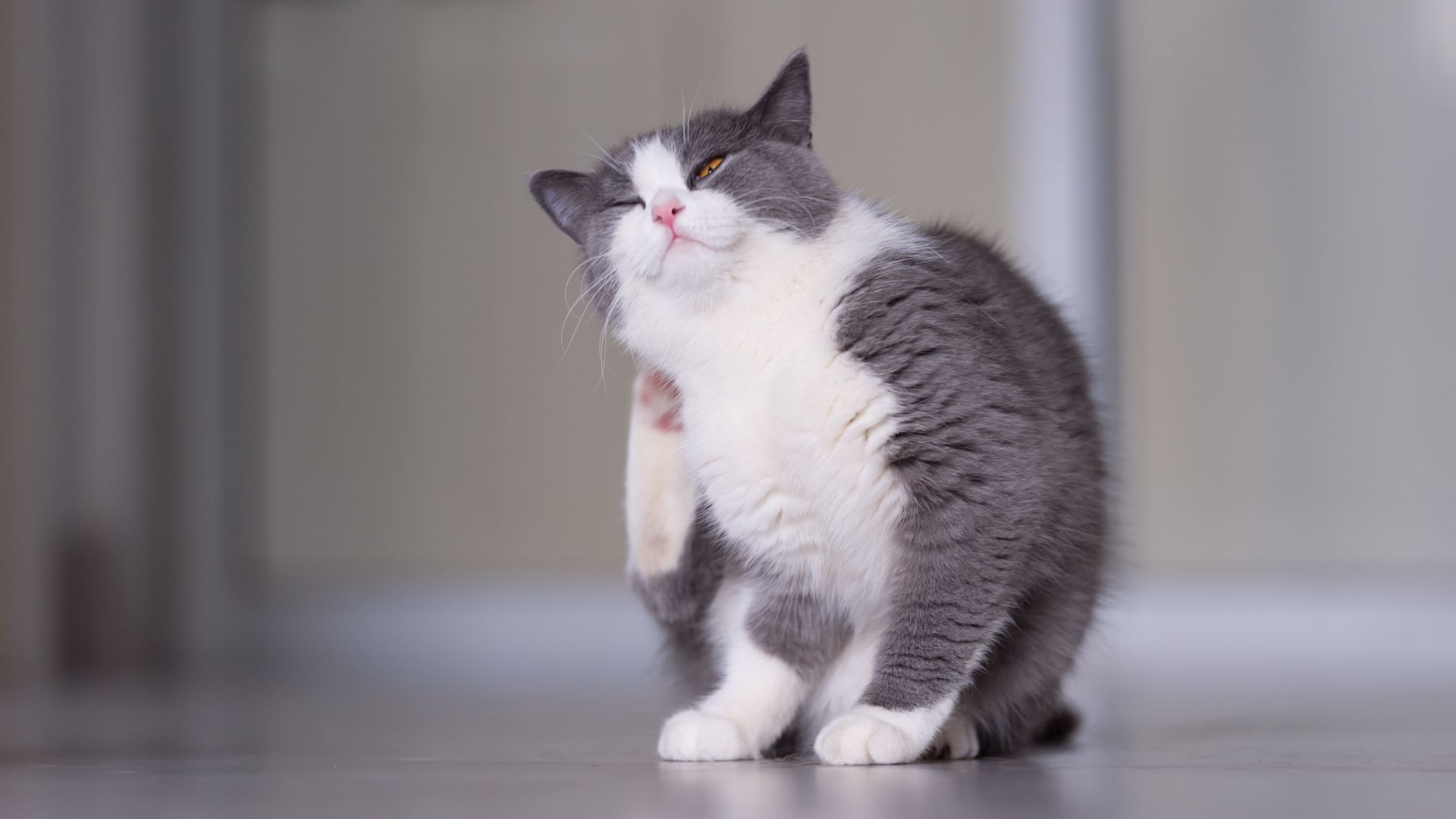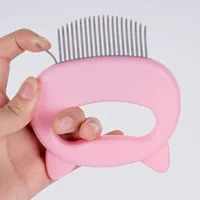Hot spots on cats: Vet's guide to signs and treatment
If you’re worried about hot spots on cats, this article will reveal everything you need to know, from how to identify one to the best ways to treat them

Hot spots on cats can be frustrating for you as well as itchy and sore for your feline friend. After all, no one wants to see their cat showing signs of pain or discomfort, not to mention that hot spots can end up looking and smelling quite unpleasant.
What is a hot spot?
A hot spot is an area of itchy and oozy skin that’s usually very inflamed and infected. As it becomes more inflamed and infected, it becomes more itchy, meaning that the cat bothers with it even more and a vicious cycle commences.
They’re often not noticed immediately by pet parents because their cat’s fur will cover it. However, as the hot spot progresses, you’ll probably notice some tell-tale signs.
Signs of hot spots on cats
If your cat is developing a hot spot, the first signs you might notice are excessive or overgrooming of a particular area.
You might notice that the fur often looks wet in that area and that your cat is paying some extra attention to it.
Depending on the location, they might keep scratching at it with their claws or rubbing it against things. If you’ve got a sensitive sense of smell, you might also notice that your cat has become a bit pongy!

How to identify a hot spot on a cat
A hot spot can be found anywhere on a cat’s body, but they most commonly occur on the face, neck, rump, groin, or tummy.
Get the best advice, tips and top tech for your beloved Pets
As the skin becomes more inflamed and infected, you might see areas of pink, raw skin with no fur. You might notice damp or matted cat fur where the oozy discharge has dried.
Sometimes, you can’t see the hot spot itself because it becomes covered with a scab and clogged with fur. However, if you find an area of skin that feels hard or scabby, it’s worth trying to gently investigate in case it’s a hot spot.
Ameliade Cat Dematting Comb | Amazon
This safe and durable design helps you tease tangles out of your kitty’s coat with ease.
Thunderpaws Pet Dematting Rake | Amazon
A professional-grade grooming tool that helps ease shedding – reducing the amount of hair in your home.
Hot spots vs ringworm symptoms
It’s really important to recognize the difference between hot spots and ringworm in cats, because you, other family members, or other pets could catch ringworm from your cat.
Cats aren’t usually itchy with ringworm, and they can be asymptomatic carriers. The appearance of cats with ringworm might be completely normal, they might have slight dandruff on their coat, or they might have round bald patches with scurf or crusts of skin. If you’re not sure whether your cat has ringworm you should see a vet right away.
Causes of hot spots on cats
Anything that causes a break in your cat’s skin or causes the skin to become itchy or irritated can lead to a hot spot. Here are some examples of causes of hot spots on cats:
Fleas or flea allergies
These pesky parasites are a common cause of allergies in cats. Even if your cat isn’t allergic to flea bites, the scratching caused by fleas damages the skin allowing bacteria to enter and a hot spot to form. If your cat has fleas, you might see them crawling around in their fur or spot flea dirt (tiny black specs).
However, if your cat has a flea allergy, just one flea bite could cause them to become very itchy. In that case, your cat might have red bumps or scabs on their back or around their neck, and you might notice some fur loss.
You can find out more about fleas and how to deal with them in our article ‘how do cats get fleas?’.
Contact allergies or irritation
If your cat lies on a carpet that’s just been cleaned with Shake and Vac, or if they lie on the kitchen tiles after you’ve mopped, these chemicals could irritate their skin or cause contact allergic reactions.
Anything from cleaning products and household chemicals to DIY supplies can cause problems with your cat’s skin, and could even be toxic. Therefore, it’s best to only use pet-safe products and prevent exposure as much as you can.
If your cat has a contact allergy you might notice them licking their underside or their paws excessively, and the skin might become red and inflamed.
Other allergies
Cats can also have allergies to food, pollens, house dust mites, and other environmental allergens. Skin allergies can cause excessive scratching, overgrooming, and thinning of the fur.
You might notice clumps of fur around the house if your feline friend is particularly enthusiastic about pulling their fur out. Why not read our article about common allergies in cats to find out more?
Clipper rash
If your cat has recently had a visit to the vet and they had to do a blood test, scan, or surgical procedure, they’ll probably have been shaved.
Sometimes, if your cat’s skin is very sensitive, the clipping process can irritate the skin, causing a red rash that might attract your cat to lick it. The hair regrowth can also cause itchiness, and both situations can occasionally lead to hot spots.
Stress and overgrooming
Cats are very susceptible to stress and anxiety. Anything from a new cat next door, to a new extension on the house, can cause your cat to feel stressed. A stressed cat may hide away more, become more vocal, or overgroom.
It can also cause health issues like cystitis or other urinary tract infections. If your cat does start overgrooming due to stress, it’s often the case that the continued licking removes the fur and damages the skin. Over time a hot spot can develop.
Treating hot spots in cats
Hot spots on cats can sometimes be treated by shaving the area to allow thorough and regular cleaning and removal of any debris.
However, many cats will continue to lick the area because it's sore. Therefore, a veterinarian may need to prescribe additional medication including a steroid cream, injection, or tablets to remove the itch and some antibiotics to clear the infection.
Home remedies for hot spots in cats
If you have a set of clippers, you can try to gently remove the fur from the area. You should never use a razor or scissors because these aren't safe. Once the fur is removed you should bathe the area with a saltwater solution twice or three times daily and try to prevent your cat from licking at it.
But how do you know what to do if a hot spot on a cat won't heal? How do you know when to visit your vet? Well, if your cat seems unwell, is continuing to lick the hotspot or the skin doesn’t seem to be drying and healing after a couple of days, make an appointment with your vet.

How to prevent hot spots in cats
Keeping up to date with flea treatments, spotting signs of overgrooming or stress, avoiding contact with household chemicals, and making sure your cat’s collar isn’t rubbing are all steps you can take to reduce the risk of hot spots.
You should also check your cat’s skin regularly to make sure it looks healthy. That way you can spot the signs early and hopefully prevent a hotspot from developing.
Read more about the best flea treatments for cats and best flea collars for cats
Edited by Georgia Guerin
This feature was last updated on February 6, 2025.
Dr Hannah Godfrey is a small animal vet who graduated from the Royal Veterinary College in 2011 and began work straight away at a busy mixed practice. Initially, she treated all species, but focussed on small animals from 2014. She has a passion for soft tissue surgery, ultrasound, and canine and feline dentistry, having completed additional training in these areas.
- Bethany StoneFreelance Writer



